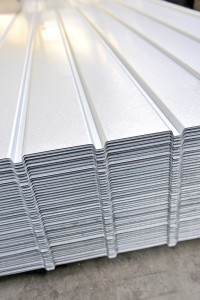What Is Galvanizing?

 A common way to protect steel against corrosion is to galvanize it. The term refers to the original process that entailed deposition of zinc by an electrical process, using a galvanic cell (battery). Electroplating is still used but coating raw steel with molten zinc (hot-dipping) is the more common practice. “Hot-dipped galvanized” is technically a misnomer, but a commonly accepted one. Our language is rife with them.
A common way to protect steel against corrosion is to galvanize it. The term refers to the original process that entailed deposition of zinc by an electrical process, using a galvanic cell (battery). Electroplating is still used but coating raw steel with molten zinc (hot-dipping) is the more common practice. “Hot-dipped galvanized” is technically a misnomer, but a commonly accepted one. Our language is rife with them.
Not all hot-dipped treatments are equal. Sheet steel is usually coated with a thin layer, producing a uniformly smooth texture and is generally termed a G-90 coating. While certainly a “hot-dipped” process, G-90 differs substantially from what is customarily called hot-dipped, which usually refers to a G-185 coating that can be four to six times thicker than G-90. It also usually produces a rough texture that is advantageous in certain applications. For example, wood fasteners benefit from a rough texture by introducing a mechanical advantage and enhanced resistance to back-out.
G-90 can also be employed for fasteners; however, corrosion resistance is minimal and not generally recommended for exterior use. In some applications, G-90 treated fasteners should never be used. The latest generation of pressure-treated lumber utilizes preservatives rich in copper salts, presenting an environment corrosive to steel. Some dissimilar metals (like steel and copper) immersed in an electrolyte (such as various chemicals in preservatives) produce an electrochemical (galvanic) reaction.
The anode in a galvanic couple (in this case the steel fastener) dissolves over time and migrates to the cathode. The zinc on a galvanized fastener is more reactive with copper and acts as a sacrificial anode to protect the steel; however, a G-90 coating is rapidly depleted in the aggressive reaction. A G-185 coating is considered acceptable for use in treated lumber. Stainless steel is preferable, since the electrical activity between it and copper is minimal.
